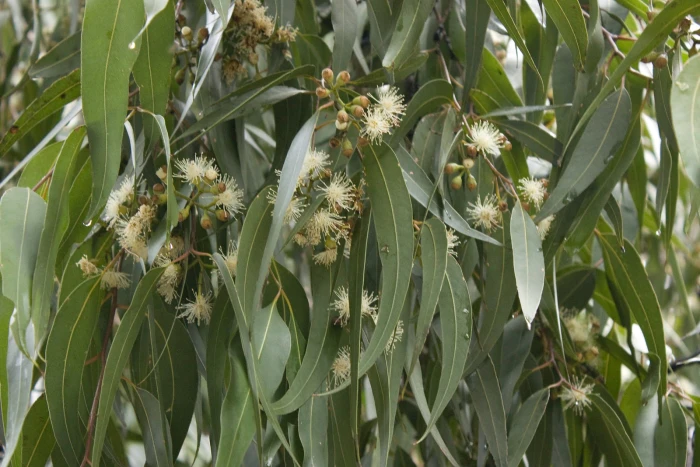Spotted Gum
(Corymbia maculata)
Spotted Gum (Corymbia maculata)
/
/

Rexness
CC BY-SA 2.0
Image By:
Rexness
Recorded By:
Copyright:
CC BY-SA 2.0
Copyright Notice:
Photo by: Rexness | License Type: CC BY-SA 2.0 | License URL: https://creativecommons.org/licenses/by-sa/2.0/ | Uploader: Rexness | Publisher: Flickr |































Estimated Native Range
Climate Requirements for Clearfield, Utah
| This Plant | Your Site | Plant Suitability for Your Location | ||
|---|---|---|---|---|
| • Precipitation | 7" - 121" | 19" | Your precipitation may be insufficient for this plant. Irrigate N" / year. | Irrigate N" / year |
| • High Temp. | 67°F - 99°F | 90°F | Your summer temperatures are normal for this plant. | Excellent |
| • Low Temp. | 3°F - 65°F | 20°F | Your winter temperatures are normal for this plant | Excellent |
This plant should grow well at your location with about N inches per year (Y minutes per month) of irrigation.
Summary
Corymbia maculata, commonly known as Spotted Gum, is an evergreen tree native to the open forests and woodlands of coastal and sub-coastal Eastern Australia. It can reach a height of 45–60 meters (148–197 feet), with a trunk that exhibits a distinctive mottled bark pattern due to shedding in patches throughout the year. The adult leaves are lance-shaped to curved, and the white flowers, which are not particularly showy, appear in groups of three from March to September, followed by urn-shaped or barrel-shaped fruit.
The Spotted Gum is valued for its hardy nature and attractive bark, which makes it a popular choice for ornamental plantings in parks and large gardens. It is also used for timber production due to its strong, durable wood. In cultivation, it requires full sun and can adapt to a range of soil conditions, from medium to fast or slow drainage, though it prefers well-drained soils. While it is drought-tolerant once established, moderate watering is beneficial for young trees. This species is also known for its essential oils and honey production. Potential problems include limb drop and susceptibility to certain pests like the eucalyptus longhorn borer, but these are generally manageable with proper care.CC BY-SA 4.0
The Spotted Gum is valued for its hardy nature and attractive bark, which makes it a popular choice for ornamental plantings in parks and large gardens. It is also used for timber production due to its strong, durable wood. In cultivation, it requires full sun and can adapt to a range of soil conditions, from medium to fast or slow drainage, though it prefers well-drained soils. While it is drought-tolerant once established, moderate watering is beneficial for young trees. This species is also known for its essential oils and honey production. Potential problems include limb drop and susceptibility to certain pests like the eucalyptus longhorn borer, but these are generally manageable with proper care.CC BY-SA 4.0
Plant Description
- Plant Type: Tree
- Height: 15-100 feet
- Width: 15-30 feet
- Growth Rate: Rapid
- Flower Color: White
- Flowering Season: Winter
- Leaf Retention: Evergreen
Growth Requirements
- Sun: Full Sun
- Water: Medium
- Drainage: Medium, Fast
Common Uses
Bee Garden, Bird Garden, Butterfly Garden, Fragrant, Hummingbird Garden, Low Maintenance, Showy Flowers, Street Planting
Natural Habitat
Open forests and woodlands of coastal and sub-coastal Eastern Australia
Other Names
Common Names:
Scientific Names: Corymbia maculata, Eucalyptus maculata
GBIF Accepted Name: Corymbia maculata (Hook.) K.D.Hill & L.A.S.Johnson